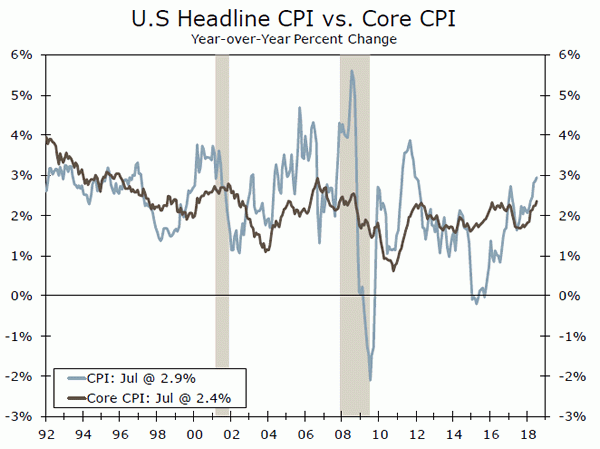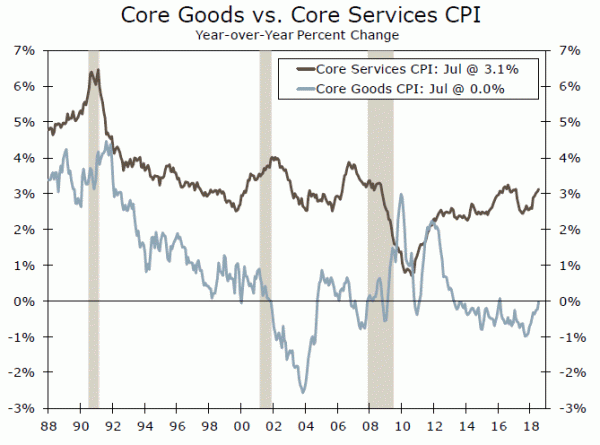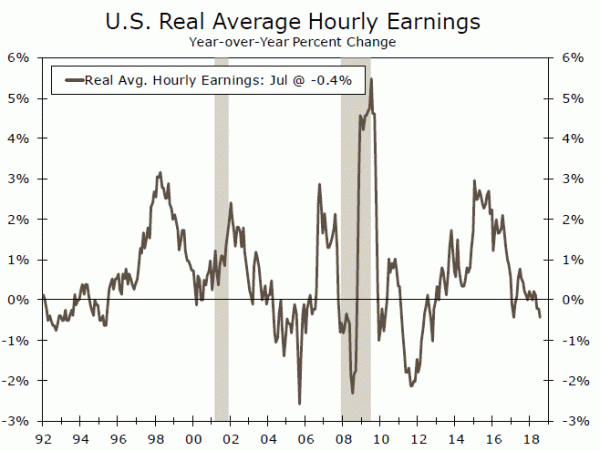Consumer price inflation edged up 0.2 percent despite a pullback in energy prices. Core inflation is up 2.4 percent over the past year and should keep the Fed on track to raise rates two more times this year.
Broad Gains in July
Consumer price inflation picked up a bit in July, with the CPI rising o.2 percent after advancing 0.1 percent in June. That kept the 12-month change in inflation at 2.9 percent, the fastest rate in six years.
Energy has been a key driver of the increase in inflation over the past year, but over the past two months prices have headed in the other direction. Lower gasoline and electricity prices sent energy costs down 0.5 percent last month.
Other major categories posted gains in July, however, including food. Grocery store prices notched another increase last month, but fierce competition and generally lower commodity prices over the past year have kept inflation quite tame. Prices for food at home are up only 0.4 percent over the past year compared to a 2.8 percent increase for food away from home, as restaurants contend with rising labor costs.
Outside of energy and food, prices continued their steady ascent. Core inflation increased a “strong” 0.2 percent (0.24 percent before rounding). Services continue to lead the way, with prices rising 0.3 percent. While housing costs continue to underpin the strength, a 2.7 percent jump in airfare—driven in part by higher fuel prices—led to a pickup in transportation services.
Core goods prices rose 0.1 percent, for the first gain in five months. Higher prices for new and used autos were a big help, up 0.3 percent and 1.3 percent, respectively. Prices for apparel and medical care goods both declined on the month.
Real Earnings Take a Hit, But Should Recover Soon
The rise in inflation over the past year has sent real wages back into negative territory and is one reason we do not expect real consumer spending to maintain the breakneck pace of the second quarter. Real earnings should improve ahead, however. Energy’s lift to inflation is expected to moderate over the next few months, leading to headline inflation falling back to 2.4 percent in the fourth quarter. Meanwhile, wage growth should continue to strengthen given the tight state of the labor market.
Fed No Longer Having to Sweat Inflation
While headline inflation should ease in the coming months amid a pullback in oil prices, core inflation will likely remain near its current 12-month rate of 2.4 percent. Over the past three months, the core index is increasing at a 2.3 percent annualized rate. Higher input costs and greater willingness among firms to raise prices point to the firmer trend continuing into 2019. The current pace of core CPI remains on par with PCE inflation running at the Fed’s 2 percent target. That should keep the Fed on track to raise rates in September and most likely again in December.

















